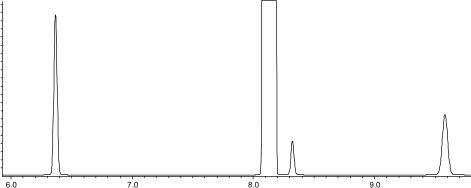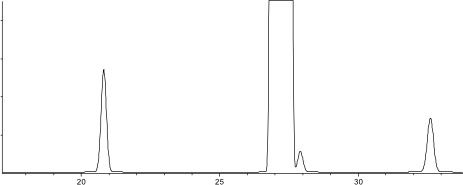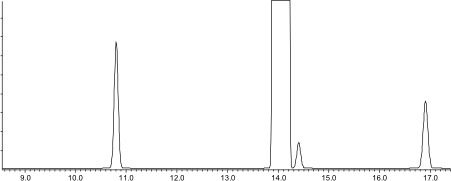The LCGC Blog: Have We Forgotten the Advantages of Core–Shell Particles?
In the late “noughties” we couldn’t avoid the webinars, seminars and online calculators which were being released by HPLC column manufacturers to extol the virtues of the “new” core-shell particle morphology that promised high performance at lower back pressures.
In the late “noughties” we couldn’t avoid the webinars, seminars, and online calculators which were being released by HPLC column manufacturers to extol the virtues of the “new” core–shell particle morphology that promised high performance at lower back pressures.
Many of us wondered if this was a reaction to the introduction of sub 2-mm HPLC particles and UHPLC instrumentation (around 2004) and the speed and efficiency which this approach brought to our industry.
It would appear the hype around core–shell particles has died down. In fact, I had trouble finding an online method translator lately, and most manufacturers now have core–shell versions of their popular phases from their fully porous particle ranges. So, are we in danger of forgetting the advantages that core–shell particles can bring to methods that still use fully porous particles? I’ll put that question a different way: Why do 5-mm or 3-mm fully porous particles still exist, and why hasn’t everyone migrated their methods to this superior technology? After all, with 2.7-mm (or similar) and 5-mm core–shell particles widely available, why wouldn’t we all want to update our legacy methods, or indeed seek to develop new methods using core–shell particles?
I really can’t answer this question, although I suspect that there are many legacy methods that work perfectly well on fully porous particles, and therefore there is no real driver to change. That being said, I see so many scientists struggling with methods where an improvement in efficiency, and therefore resolution, would deliver significant benefits and solve issues with their “troublesome” methods, or where shortened analytical run times may help with throughput problems. This technical tip is written with those people in mind, and the fact that they may have a limited budget for new instruments but still seek to improve their existing methods or develop new methods that are the best they can make them.
As well as refresher on the simple maths required to undertake method transfer from fully porous particles (FPP) to superficially porous particles (SPP), I’m going to impose a further constraint of trying to work within the proposed new USP General Chapter <621>, which is currently in draft form (1). For a more detailed explanation of the proposed changes to Chapter <621>, see reference (2).
To translate the various method parameters from the FPP to the SPP column, one might use the following equations;
Flow Rate
(Equation 1)

Gradient Segment Times
(Equation 2)

When changing column or particle size dimensions, for USP methods we need to comply with the requirements that:
L/dp = -25% to +50%
or
N = -25% to +50%
That is, the column length (L) to particle size (dp) ratio must not fall outside these limits.
In this case, we wish to translate the method for USP method for Lanzoprazole and its impurities which uses a 150 x 4.6 mm column with 5-mm FPP to an SPP column which uses 2.7-mm particles. Typically, our choices would be to use 100, 75, or 50-mm column lengths, and we need to decide which of these columns would comply with Chapter <621> requirements:
L
dp
L/dp ratio
% change
150
100
75
50
4.6
2.7
2.7
2.7
32,600
37,100
27,800
18,500
-
+14
-15
-44
So, we can see that the 100- or 75-mm columns are available as options when switching to 2.7-mm SPP formats. Let’s assume that we wish to take full advantage of the speed gains offered by SPP particles and that we will opt for the 75-mm column.
It is also possible for us to reduce the internal diameter of the HPLC column providing that the linear velocity of the eluent is maintained. To ensure that this is the case, we use Equation 2 to calculate the eluent flow rate.
Typically, we might have the options of 3-mm or 2.1-mm internal diameter columns to chose from, however we must be careful when reducing internal diameter as it has been shown that making large changes to the instrument dwell volume (VD) to column volume (VM) ratio can induce changes in selectivity when using gradient methods (3). While a detailed treatment of this topic is outside the scope of this discussion, I would urge you to seek further information from Reference 3, which also provides information on what changes to the gradient program might be made in order to avoid selectivity issues when large changes in VD/VM are required.
We can estimate the interstitial volumes of both the SPP and FPPs if we know some facts about the materials in use, or we might measure this directly by measuring the dead time (volume) of the system with and without the column installed.
We need to know the porosity ep of the particles (ask your manufacturer for this information) or we might estimate the porosity of the corresponding SPP using the relationship:
(information obtained from the manufacturer or estimated from dead time marker)

(Equation 3)

(Equation 4)

(SPP particle diameter = 2.7 mm and core diameter = 1.7 mm)

Estimating the extra column volume for our three columns can then be achieved using;
(Equation 5)

If we assume the system dwell volume is around 300 mL the VD/VM ratio changes here would be:
150 x 4.6 mm column using FPP VM = 1700 mL, VD/VM = 0.18
75 x 3.0 mm column using SPP VM = 313 mL, VD/VM = 0.96
75 x 2.1 mm column using SPP VM = 153 mL, VD/VM = 1.96
We can estimate the required gradient adjustment required for the two reduced dimension columns using the following equation;


z = -0.31
If the value of Z is negative, then the gradient needs to be started Z min prior to sample injection (possible with newer HPLC systems), and if positive an isocratic hold of Z min needs to be inserted at the start of the gradient.
Working through the various calculations we arrive at the following sets of conditions:
Original Method:
Column – 150 x 4.6 mm 5 mm (FPP)
Flow rate – 1 mL/min
Gradient –
Time (mins)
Solution A
(%)
Solution B
(%)
0
90
10
40
20
80
50
20
80
51
90
10
60
90
90
(A is 100% water, B is acetontrile:water:triethylamine (160:40:1) adjusted to pH 7.0 with phosphoric acid)
Translated method 1:
Calculated from Equation 1
Column – 75 x 3.0 mm 2.7 mm (SPP)
Flow rate – 0.79 mL/min (rounded to 0.8 mL/min)
Equilibration time calculated using (10x column volume) / flow rate)
Gradient –
Time (mins)
Solution A
(%)
Solution B
(%)
-0.3
90
10
10.7
20
80
13.4
20
80
14.4
90
10
18.3
90
90
Subsequent lines calculated using Equation 2
Calculated using Equation 6
Note that the gradient here needs to be started 0.3 min prior to sample injection to retain the selectivity. If this is not possible using your equipment, consider using the same internal dimeter column as the original, but with reduced column length, for example, 75 x 4.6 mm in this case. Further, the re-equilibration time has been calculated using 10x column volume which may be shortened but this needs to be assessed empirically.
Translated method 2:
Calculated from Equation 1
Column – 75 x 2.1 mm 2.7 mm (SPP)
Flow rate – 0.39 mL/min (rounded to 0.4 mL/min)
Equilibration time calculated using (10x column volume) / flow rate
Subsequent lines calculated using Equation 2
Calculated using Equation 6
Gradient –
Time (mins)
Solution A
(%)
Solution B
(%)
-0.7
90
10
10.4
20
80
13.0
20
80
14.0
90
10
17.8
90
90
Here the gradient needs to be started 0.7 min prior to sample injection.
The chromatograms obtained using these three methods are shown in Figure 1:

Figure 1: Resulting chromatogram with figures of merit for the original USP method for Lansoprazole impurities and the same method employed using Chapter <621> allowable changes and 2.7mm Superficially Porous Particles with 75mm x 3.0mm (middle) and 75 x 2.1 mm (bottom).

Equation 7
One further important adjustment that is required is the volume of sample injected. As column dimensions are reduced and the particle morphology is changed, the amount of stationary phase available reduces, risking overloading of the column, fronting peaks and reduced accuracy and reproducibility of quantitation. We have found the following formula very useful, which is based on a well-established mathematical relationship, but which further reduces the injected volume by 30% to account for the marginally lower loadability of the superficially porous particles. Reducing by this further 30% is typically more than is required to account for the reduction in available surface area, and the injection volume may be increased empirically if extra sensitivity is required.
(Equation 7)


(5 mL used in practice for the 3-mm i.d. column and 3-mL used for the 2.1-mm i.d. column)
Note that this formula is not recognised by USP <621> the current version of which (USP 40 – NF 35) says; “The injection volume can be adjusted as far as it is consistent with accepted precision, linearity, and detection limits. Note that excessive injection volume can lead to unacceptable band broadening, causing a reduction in N and resolution, which applies to both gradient and isocratic separations.” Therefore, the suitability of the injection volume using the method in Equation 7 should be empirically assessed.
From the chromatograms in Figure 1 it should be obvious that either of the superficially porous core–shell column methods are more than three times faster than the USP method using the original conditions. This improvement in speed is due to the increased efficiency of core–shell columns, which allow appreciably smaller columns to be used without compromising the efficiency and resolution of the separation. This increase in speed of analysis can be very important in high-throughput laboratories.
However, there are also situations in which the inherent efficiency increase achieved when using core–shell particles can be a great advantage. In the following example we used a system with a dwell volume of 300 mL and extra column volume of 60 mL, initially following the USP method. Figure 2 (top) shows that the resolution between the Lansoprazole and Lansoprazole RS A peaks would be unacceptable in a practical situation. Using the principles above, a method translation was produced which used a 2.7-mm superficially porous particle with the same 150 x 4.6-mm column dimension, which produced a significant improvement in resolution from 1.78 to 2.38, which may be usable in practice.
Figure 2: Resulting chromatogram with figures of merit, using a standard HPLC system, for the original USP method for Lansoprazole impurities (top) and the same method employed using Chapter <621> allowable changes and 2.7mm Superficially Porous Particles with the same column dimensions (bottom).


Using simple translation methods, we have demonstrated that, with some diligence, chromatographic runs times and quality of chromatography can be significantly improved when using superficially porous silica particles. Perhaps we should then ask our original question again – “Why would a fully porous particle be used when the use of superficially porous particles brings so many benefits?” Surely it couldn’t be because the method translation effort is too much to bear?
Finally, perhaps we need to briefly consider the question of selectivity equivalence between the fully porous and superficially porous variants of manufacturers stationary phases. We have seen some variation in selectivity between FPP and SPP variants of nominally the same bonded phase from the same manufacturer. While adjustments to the gradient profile to account for VD/VM ratio differences can help to address these issues, the fact remains that selectivity differences have been noted. Could this be a factor which makes the preferential use of SPPs a step too far for method translation? Of course, this would not be a problem if the SPP was used during the method development phase and we should also note the fidelity of selectivity between FPP and SPP variants are very good for some manufacturers.
References
- C188676 (43(5) Harmonization Stage 4 General Chapter 621)
- http://www.chromatographyonline.com/lcgc-blog-shape-things-come-possible-changes-usp-chapter
- http://www.chromatographyonline.com/translations-between-differing-liquid-chromatography-formats-advantages-principles-and-possible-pitf

Tony Taylor is the technical director of Crawford Scientific and ChromAcademy. He comes from a pharmaceutical background and has many years research and development experience in small molecule analysis and bioanalysis using LC, GC, and hyphenated MS techniques. Taylor is actively involved in method development within the analytical services laboratory at Crawford Scientific and continues to research in LC-MS and GC-MS methods for structural characterization. As the technical director of the CHROMacademy, Taylor has spent the past 12 years as a trainer and developing online education materials in analytical chemistry techniques.
The LCGC Blog: Historical (Analytical) Chemistry Landmarks
November 1st 2024The American Chemical Society’s National Historic Chemical Landmarks program highlights sites and people that are important to the field of chemistry. How are analytical chemistry and separation science recognized within this program?

.png&w=3840&q=75)

.png&w=3840&q=75)



.png&w=3840&q=75)



.png&w=3840&q=75)